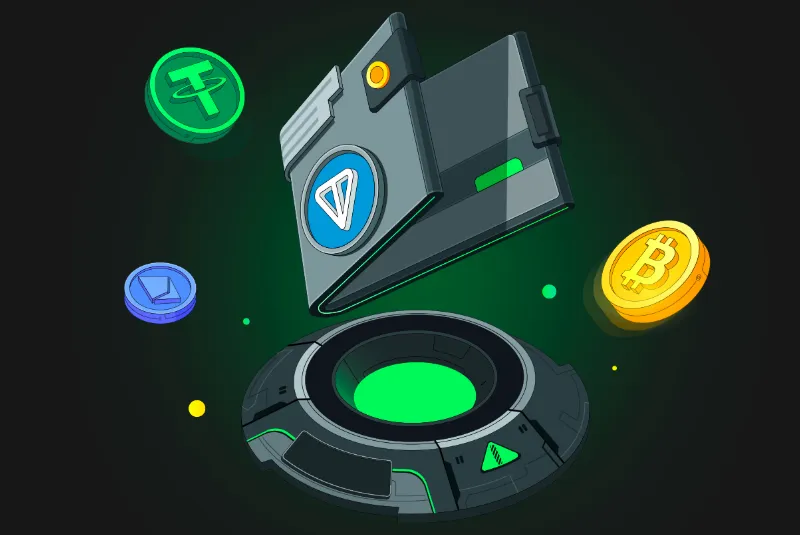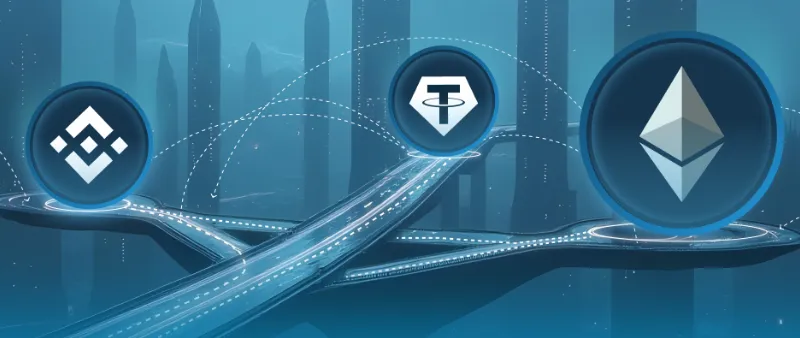Exploring Cross-Chain Bridges on TON Blockchain
Introduction to the TON Blockchain and Bridges
The world of blockchain technology has evolved significantly, with various networks emerging to address specific needs. Among these, the TON Blockchain stands out for its speed and scalability. It offers a unique environment where developers can create decentralized applications that operate efficiently. However, as the ecosystem grows, the need for interoperability becomes crucial. This is where TON bridge solutions come into play, enabling seamless interaction between different blockchains.
Interoperability is not just about transferring assets; it’s about creating a cohesive ecosystem. The TON Blockchain, with its innovative architecture, supports numerous applications and services. Yet, users often find themselves limited by the boundaries of a single network. To overcome this, bridges have been developed to connect disparate blockchains. These bridges allow users to leverage the strengths of multiple networks without being confined to one.
Understanding how these bridges work is essential for anyone looking to maximize their blockchain experience. They function by locking assets on one chain and minting equivalent tokens on another. This process ensures that value is preserved across networks. As more users recognize the potential of cross-chain interactions, the demand for robust bridge solutions continues to grow. The TON Blockchain is at the forefront of this movement, offering tools that facilitate smooth transitions between ecosystems.

The Role of Bridges in Blockchain Interoperability
Blockchain interoperability is a critical component of the decentralized future. Without it, each network operates in isolation, limiting the potential for collaboration and innovation. Bridges serve as connectors, allowing data and value to flow freely between chains. This capability is particularly important for projects that aim to integrate multiple technologies or reach broader audiences. For instance, the symbiosis bridge exemplifies how specialized solutions can enhance connectivity, enabling seamless transfers between Ethereum, Binance Smart Chain, and other major networks.
These bridges are not merely technical constructs; they represent a shift in how we perceive blockchain ecosystems. By enabling cross-chain communication, they foster an environment where developers can build more versatile applications. Users benefit from increased flexibility, as they can access services and assets across different platforms. This interconnectedness is vital for creating a truly decentralized web, where no single entity holds disproportionate control. For example, a decentralized exchange built on TON could integrate with Ethereum-based stablecoins, providing users with a wider range of trading options.
Moreover, bridges contribute to the overall security and resilience of blockchain networks. When properly implemented, they distribute risk and reduce the likelihood of systemic failures. This is because they encourage diversification, preventing any one chain from becoming a single point of failure. As the blockchain landscape continues to evolve, the role of bridges will only become more pronounced. Their ability to unite disparate systems is key to realizing the full potential of decentralized technologies. In addition, bridges help mitigate the risks associated with network congestion and high gas fees, making blockchain usage more accessible and cost-effective for everyday users.
Benefits of Using TON Blockchain Bridges
One of the primary advantages of using TON Blockchain bridges is the enhanced liquidity they provide. By connecting to other networks, users can access a wider pool of assets and trading opportunities. This increased liquidity benefits both individual traders and larger institutions, as it reduces slippage and improves market efficiency. Additionally, the ability to move assets across chains opens up new avenues for investment and growth.
Another significant benefit is the reduction in transaction costs. Traditional methods of transferring assets between blockchains often involve high fees and lengthy processing times. However, with solutions like the rubic bridge, users can enjoy faster and more cost-effective transactions. This efficiency is particularly valuable for those engaging in frequent trades or managing large portfolios. Lower costs also make blockchain technology more accessible to a broader audience, democratizing access to digital assets.
Finally, TON Blockchain bridges offer unparalleled flexibility. Users are no longer restricted to a single network, allowing them to explore diverse ecosystems and take advantage of unique features offered by each. Whether it’s participating in decentralized finance protocols or accessing novel NFT markets, the possibilities are vast. This versatility empowers users to tailor their blockchain experience to their specific needs and preferences, enhancing overall satisfaction and engagement.

Leading Cross-Chain Bridges on TON
Several cross-chain bridges have emerged as leaders within the TON Blockchain ecosystem, each offering distinct advantages. One notable example is the orbit bridge , which has gained popularity for its reliability and ease of use. It provides a straightforward interface for users to transfer assets between chains, ensuring a smooth and hassle-free experience. Its robust infrastructure supports high transaction volumes, making it suitable for both retail and institutional users.
Another prominent player is the symbiosis swap, which focuses on optimizing cross-chain swaps. This bridge leverages advanced algorithms to minimize slippage and maximize returns for users. Its integration with multiple blockchains enhances its utility, allowing for seamless asset exchanges. Developers appreciate its modular design, which facilitates customization and adaptation to specific project requirements. This flexibility makes it a preferred choice for many decentralized applications.
Additionally, the tron bridge has carved out a niche by catering to users seeking interoperability with the Tron network. It enables efficient transfers of TRC-20 tokens to the TON Blockchain, expanding the range of available assets. This bridge is particularly appealing to those involved in gaming and entertainment sectors, where Tron’s presence is strong. By bridging these two ecosystems, it creates opportunities for innovation and collaboration, further enriching the blockchain landscape.
How to use Bridges for Seamless Asset Transfers
Using bridges for asset transfers involves a series of steps designed to ensure security and efficiency. First, users must select a bridge that aligns with their needs and supports the desired chains. Once chosen, they initiate the transfer by depositing assets into the bridge’s smart contract. This action locks the original tokens and triggers the creation of equivalent tokens on the target chain. Understanding this process is crucial for executing successful transactions.
Next, users should verify the details of their transfer, including the amount and destination address. Most bridges provide real-time updates, allowing users to track the progress of their transactions. During this stage, it’s important to double-check all information to prevent errors. Some bridges offer additional features, such as customizable gas fees or expedited processing, which can enhance the user experience. Familiarity with these options helps optimize the transfer process.
Finally, after the transaction is complete, users receive their assets on the target chain. At this point, they can utilize the transferred tokens within the new ecosystem, whether for trading, staking, or other activities. It’s advisable to review the terms and conditions of the orbit bridge to understand any associated fees or restrictions. By following these guidelines, users can achieve seamless asset transfers and fully harness the capabilities of cross-chain bridges.

Future Trends in Blockchain Bridges on TON
The future of blockchain bridges on the TON Blockchain looks promising, with several trends poised to shape the landscape. One anticipated development is the increased adoption of zero-knowledge proofs to enhance privacy and security. These cryptographic techniques enable confidential transactions while maintaining transparency and trust. As regulatory scrutiny intensifies, bridges incorporating such features will likely gain favor among privacy-conscious users.
Another trend is the rise of multi-chain aggregators, which streamline interactions across multiple bridges. These platforms simplify the user experience by providing a unified interface for managing cross-chain activities. By reducing complexity, they attract a wider audience and promote greater adoption. Furthermore, advancements in artificial intelligence could lead to smarter bridges capable of optimizing routes and minimizing costs automatically. Developers integrating TON Bridges can leverage TON Brand Assets to maintain a consistent and professional look.
Lastly, collaborations between blockchain projects will drive innovation in bridge technology. Partnerships aimed at standardizing protocols and improving compatibility will strengthen the overall ecosystem. Such efforts will pave the way for more sophisticated applications, ranging from decentralized autonomous organizations to complex financial instruments. As these trends unfold, the TON Blockchain will continue to solidify its position as a leader in cross-chain interoperability.
Finally, the convergence of blockchain with emerging technologies such as the Internet of Things (IoT) and 5G networks presents exciting opportunities for bridges. These synergies could enable real-time asset transfers triggered by IoT devices or ultra-low latency transactions facilitated by 5G connectivity. Imagine a scenario where smart appliances autonomously manage energy consumption by swapping tokens across chains to optimize costs. Such innovations would blur the lines between physical and digital worlds, ushering in a new era of interconnectedness and convenience. As these technologies mature, TON Blockchain bridges will undoubtedly play a central role in bridging the gap between traditional industries and the decentralized future.